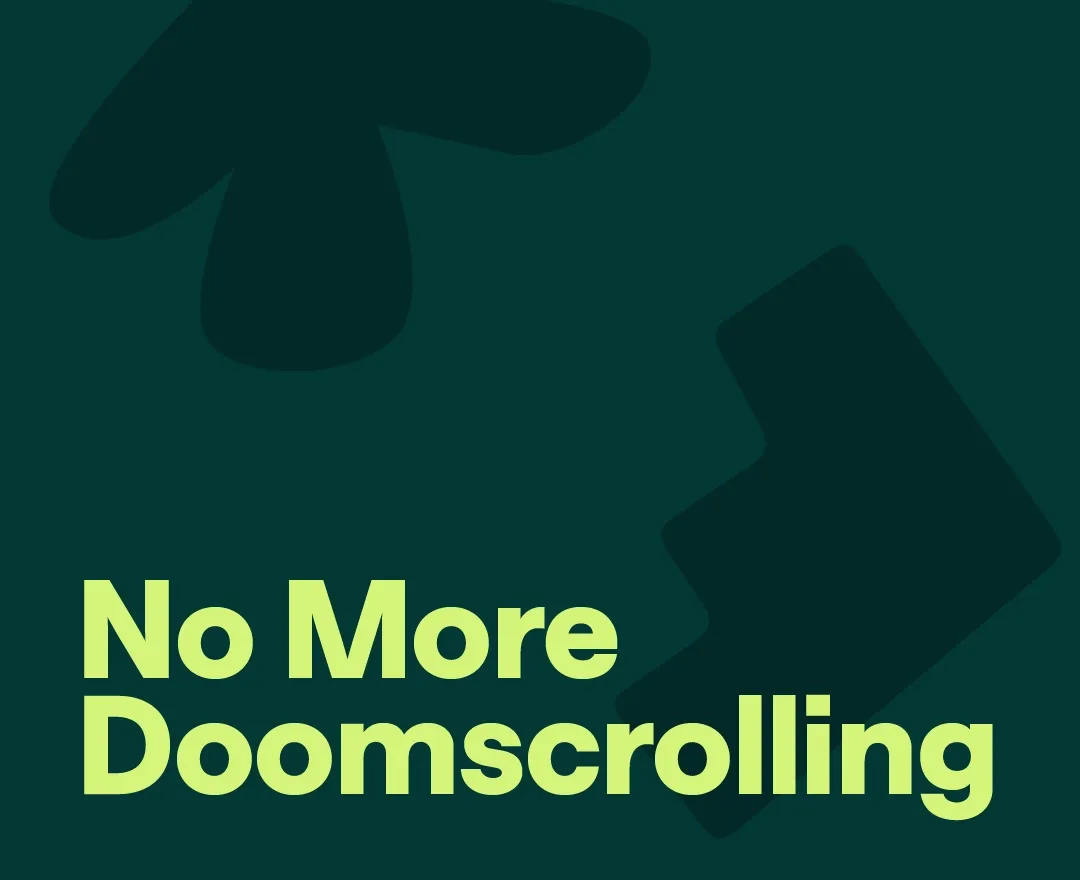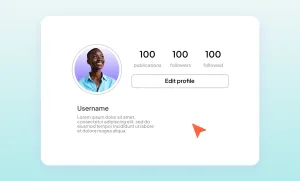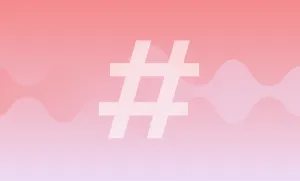How much time do you lose to mindlessly scrolling through news stories that make you feel angry, sad, or existential?
Mere minutes? Or hours? How much time does that add up to over a year?
With social media platforms like TikTok, X, and Instagram delivering addictive, easy-to-consume, sensationalist content on a silver platter, it’s easier than ever to fall into depressing yet captivating rabbit holes.
And like most online phenomena, this has a name: doomscrolling.
Isn’t doomscrolling just being online?
Doomscrolling is often equated with mindlessly scrolling through our phones, but the term actually describes the experience of getting sucked into a cycle of scrolling through negative news stories one after the other, even if they’re upsetting or anger-inducing.
This term first gained cultural popularity in 2018 after it popped up on Twitter (now X), but it really took off in 2020. For anyone who doesn’t remember what happened in 2020, let’s recap the themes of the year: pandemic, protests, and political dissonance.
As we were all locked up in our homes, is it any surprise that many of us got into the habit of endlessly scrolling through social media? We were yo-yo-ing between reading heart-breaking stories and trawling the internet for news that would make us feel better—yet it almost always left us feeling worse.
This may have been when doomscrolling hit its peak, but this social phenomenon is still alive, thriving, and wreaking havoc on people’s well-being.
Doomscrolling is terrible for our mental health
We love social media (obviously) and believe digital content offers huge benefits to online communities. But we have to be realistic about the negative impact unhealthy online behavior like doomscrolling can have on mental health, especially as one study found that 16.5% of people showed signs of “severely problematic” news consumption.
Firstly, doomscrolling is closely connected with anxiety. One way anxiety-prone individuals try to alleviate their worries is by arming themselves with the information they feel will keep them ‘safe.’ In practice, this means seeking out potentially distressing content. (Not-so-fun fact: this is why many women engage with true crime content).
But this can actually make the situation worse. As constantly cycling through real-life horror stories is akin to feeding your brain a steady stream of stress-inducing cortisol, it’s not surprising that doomscrolling can lead to higher rates of stress, anxiety, insomnia, and poor physical health.
Doomscrolling can also impact the way we see the world around us, as spending too much time engaging with negative content will begin to skew our perceptions. Social media can be a great source of news, but because of the way our feeds are cultivated, it should never be your only source.
As social media platforms rely on algorithms designed to serve us content they think we’ll like based on past behavior, we can quickly find ourselves in an echo chamber. This means we’ll be predominantly served news content that fits within our existing worldview, limiting our ability to expand our perspectives.
How to avoid falling into the doomscrolling trap
So, what can we do to break free of doomscrolling? Here are our top tips for avoiding falling into the doomscrolling trap.
- – Get your news from varied sources: Engage with a wide range of trustworthy sources and keep your mind open to new ideas.
- – Seek out facts over fiction: Seek out creators who prioritize factual reporting over sensationalized content that encourages fear-mongering. And remember, take everything you see online with a pinch of salt.
- – Curate your feed: Unfollow accounts whose content you find upsetting. We’re not suggesting you never read negative news stories, but by limiting your exposure to potentially upsetting content, you’ll minimize the risk of doomscrolling.
- – Embrace positivity: Following positive accounts that share happy news, like @thatgoodnewsgirl or @sambentley on TikTok, can help break the cycle and make sure you’re served positive content, too.
- – Set boundaries: Setting time limits on your social media usage can stop you from falling into a doomscrolling hole. Features like Instagram’s ‘take a break’ setting and TikTok’s option to set a screen time cap are designed to help you enforce healthy boundaries.
- – Understand your habits: If you find that, like many of us, you tend to doomscroll at bedtime, take steps to break this habit, like leaving your phone in another room at night.
Content creators: are you mindful of what you post?
As a content creator, you have the power to brighten people's feeds and provide an uplifting voice rather than contributing to the negativity that fuels doomscrolling.
If you’re wondering what you can do to be part of the solution and help audiences avoid doomscrolling behavior, let’s talk about it:
- – Be mindful about the type of content you post and how it may impact your audience
- – Consciously share positive content to balance out serious topics
- – Avoid sensationalism and over-exaggerating negative situations
- – Provide context to avoid making your audience feel hopeless
- – Encourage your audience to have positive discussions in the comments
- – Listen to feedback about how your content makes your audience feel








